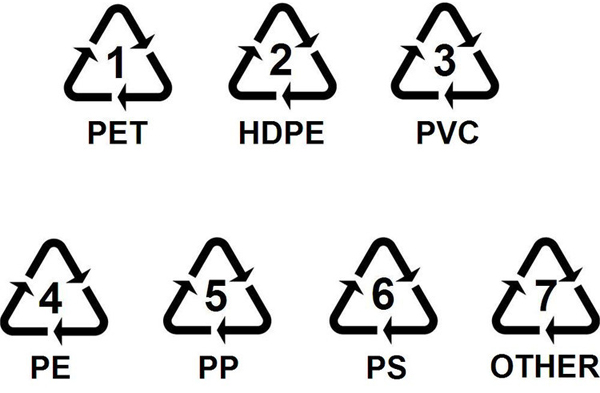- Mob:0086-152-52900921 (WhatsApp)
- Email:info@toplasmachine.com
- Skype:tonyshi1028
The origin of plastic scrap can be from several sources; all around us we have different types of plastic. The plastic itself has different physical characteristics that effect it's application. Identifying plastic can be difficult for anyone, however you can find on most products you buy labelling which identifies the type of plastic it is. If you look close enough you'll surely find PP, LDPE, or HDPE or PET written on the packaging, each one refers to a type of plastic.
Most plastics can be recycled, however non-recycled plastic and recycled plastic have different industrial applications. Some products are made from non recycled plastic, this type of plastic is pure, it's commonly called virgin plastic. In almost every type of plastic you'll have two grades for each type: virgin and recycled.
How are they distinguished different plastic?
Identifying the most common types of plastic may be relatively simple for someone who is a professional plastic dealer, but can be difficult for everyone else. The easiest way is see if it is labeled, as I mentioned some household plastic scrap may have its type printed or embossed. Although even the professional has difficulty in identifying the more complex types of plastic which requires them to use more advanced testing to identify its type.
The most common plastics you may find is PET (polyethylene terephthalate) and HDPE (high density polyethylene) which is used in bottles. The following list will include some of the most common plastics and it's general type of use:

1. PETE or PET (polyethylene terephthalate)
Physical description: clear strong plastic, can be used as a fiber
Applications for virgin plastic:bottling, textile fibers
Applications for recycles plastic: bottles, packaging film, fibers for carpets
2. HDPE (high density polyethylene)
Physical description: white or coloured
Applications for virgin plastic:shopping bags, bottles (example: milk, cream, shampoo, etc), crates to carry bottles, pallets, water, gas and other pipes
Applications for recycles plastic: bottles (detergent and others), crates, pallets, agriculture watering pipes, plastic boxes
3.1.UPVC (Unplasticized Polyvinyl Chloride)
Physical description: clear strong plastic
Applications for virgin plastic: plumbing accessories and pipes, bottles
Applications for recycles plastic: plumbing accessories, bottles
3.2. PPVC (Plasticized Polyvinyl Chloride)
Physical description: clear strong plastic
Applications for virgin plastic: garden hose, shoe soles, flexible tubes
Applications for recycles plastic: industrial flooring, garden hose inner core
4. LDPE (low density polyethylene)
Physical description: soft flexible plastic
Applications for virgin plastic: plastic sheets, plastic lids (example: tupperware lids)
Applications for recycles plastic: electrical tubes for wires, film for packaging and agriculture use
5. PP (Polypropylene)
Physical description: Hard plastic, but is flexible
Applications for virgin plastic: straws for soft drinks, chips bags, lunch pales, recipients (like ice cream)
Applications for recycles plastic: compost bins, boxes
6.1. PS (Polystyrene)
Physical description: rigid, may be clear, glassy effect
Applications for virgin plastic: yogurt recipient, plastic tableware (knife,fork, spoon, etc), crystal plastic imitations
Applications for recycles plastic: coat hangers, rulers, video and DVD boxes, plastic office accessories
6.2 EPS (Expanded Polystyrene)
Physical description: foam, lightweight
Applications for virgin plastic: Insulation, hot coffee cups, special packaging, meat trays
7. Other